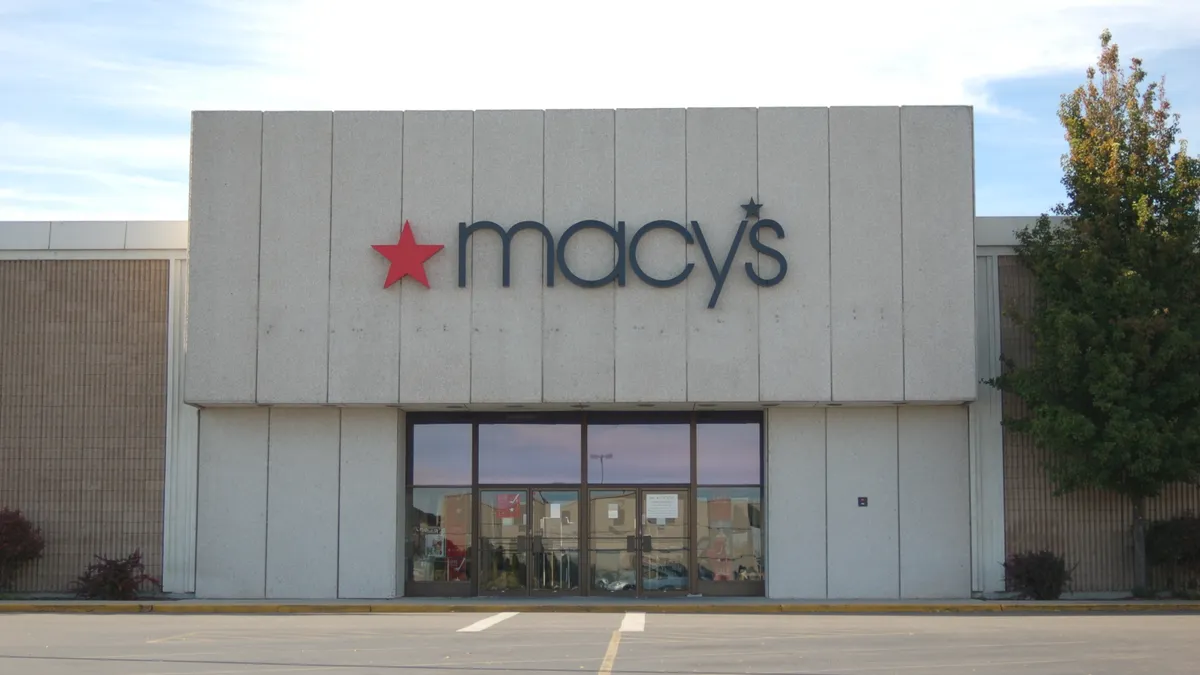Dive Brief:
-
Several analysts are taking retail projections down a notch in light of profit pressures despite healthy earnings reports in recent quarters, the Financial Times reports. Third quarter profit estimates have been cut for 52 (almost three-fifths) of the 89 S&P retail companies over the last three months, according to the publication's analysis, based on Bloomberg citations.
-
The downgrades apply to the likes of Macy's, Lowe's and Tiffany, but Amazon is spared, according to the report. J.C. Penney and L Brands are particularly under pressure, in light of their struggles to keep sales up, the Financial Times said.
-
Many retailers are investing the proceeds from their recently more lucrative quarters, which is cutting into profits, according to the report.
Dive Insight:
While the notion of a retail apocalypse has been overplayed, so is the idea of an enduring retail bounce, according to the Financial Times.
Much of the reinvestment cited in the report involves retailers' moves to boost their e-commerce and omnichannel sales, which costs money in the near term but also pressures margins in light of the ongoing expense of fulfillment for digital sales. Those sales these days account for a disproportionate share of total retail sales growth, with U.S. e-commerce growth stoking nearly half (46%) of total retail growth over the past year, which is more than 15 percentage points since late 2014, according to data from global business advisory firm FTI Consulting emailed to Retail Dive. And that is often at the expense of brick-and-mortar sales.
"Online sales are growing at a respectable rate for many omnichannel retailers in large part because they continue to bear nearly all the associated costs of attracting and accommodating online shoppers, while their store-based sales often languish," Christa Hart, FTI senior managing director in retail and consumer products practice, said in a statement. "This has made the omnichannel strategy far less lucrative for retailers than once anticipated, even though they collectively claim a majority of online sales."
Well executed digital strategies allow retailers to remain competitive, but that's coming at the expense of profits and return on investment, she also said.
Amazon remains an outlier. But the e-retailer runs a profitable cloud services unit, AWS, that helps support its retail operations, an option that most rivals (aside from Alibaba) don't have.
The downgrades cited by the Financial Times come as the wider U.S. economy has provided a healthier backdrop than retailers have experienced in years, but there's some trouble for consumers on the horizon. "Macroeconomic data continues to be a tailwind for retail. Unemployment is low. Job creation, as measured by [the U.S. Department of Labor], claims, non-farm payrolls, and [human resources firm] ADP, is solid," Retail Metrics President Ken Perkins wrote in an email to Retail Dive. "Small business confidence is near cycle highs. Consumer confidence and business sentiment are elevated. Housing has shown some signs of softening. Interest rates are rising. Gas prices are up. Trade concerns are ever present."
E-commerce costs have pressured even the sector's stalwarts. Walmart in its most recent quarter saw its strongest sales growth in a decade, for example, but also saw operating income fall by 3.7%. "The decline in operating profit is more concerning as it reflects ongoing pressures from investing in lower prices, customer service, digital infrastructure and store refurbishments, as well as increased labor and transportation costs," GlobalData Retail Managing Director Neil Saunders said in comments emailed to Retail Dive. "These pressures are unlikely to dissipate as the year progresses."













